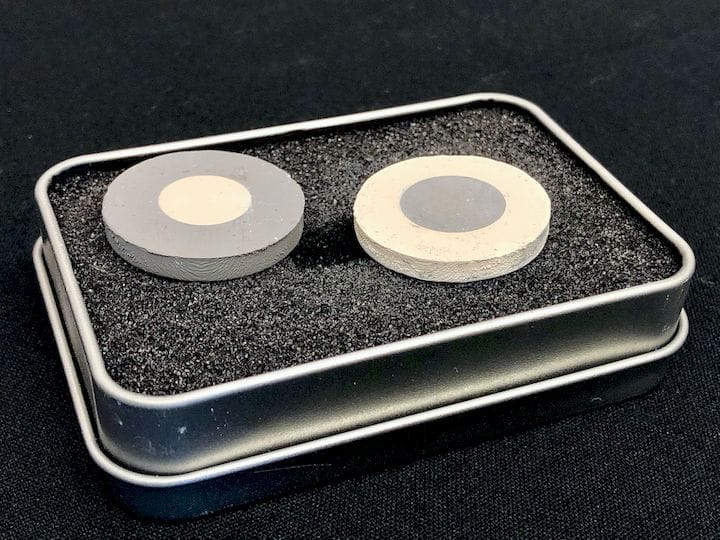![Sample prints from XJet’s new ceramic-metal 3D printing process [Source: Fabbaloo]](https://fabbaloo.com/wp-content/uploads/2020/05/image-asset_img_5eb09225a73c0.jpg)
I’m reading a fascinating article on Forbes where senior contributor Marco Annunziata discusses recent innovations from XJet. It got met thinking about something important.
The article referred to XJet’s new experimental capability to 3D print objects in both ceramic AND metal within the same print job. We saw samples from this incredible process in person and were very impressed. This is a feat of 3D printing that has never previously been done.
Ceramic and Metal 3D Printing
The Forbes story went on to explain how XJet’s 3D printing process works, which we’ve already explained in other stories. It also talked about how XJet’s clients have been using their technology for building 5G networks, among other things.
But what’s bugging me about this is the link between these incredible 3D printing advances and using them in industry. XJet has found clients who are making good use of their ceramic 3D printing technology, and there are even thoughts of using these 3D prints in nuclear plants.
Using Advanced 3D Printing
That’s all good, but how does this happen? Consider the case of the new ceramic/metal printing capability. I believe it to be an astonishing advance, and suspect it could be used in a variety of unusual engineering and industrial situations.
However, I am not a chemist. I am not a nuclear engineer. I am not an electrical engineer. I am not a rocket scientist. I am not a consumer products designer. I am not a generative design artist.
I don’t know exactly how such a developed could be applied into each of those disciplines, nor hundreds of others.
And usually, 3D printer manufacturers don’t know, either.
How Can Industry Know 3D Printing?
For some industries, it’s likely new developments like the ceramic/metal printing technology from XJet could be entirely revolutionary, enabling perhaps new kinds of products never envisioned previously.
Somewhere on this planet there is an engineer who, upon hearing the availability of this technology, would leap for joy with thoughts of futuristic designs.
But how would they even hear about this development? At Fabbaloo we’re on this stuff every day — and we have a hard time keeping up with new developments. How can someone dedicated to other disciplines hope to discover new additive manufacturing concepts?
Sure, they can occasionally read trade publications or attend exhibitions, where they may accidentally stumble into a vendor’s stand where they could learn about new processes, but the odds of that happening for any given engineer are truly miniscule. Even worse, some 3D printing exhibitors at trade shows don’t even address this need, and expect visitors to “know” what’s happening.
Reaching 3D Printer Customers
My thought is that 3D printer companies might want to try reaching much deeper into vertical industries to make engineers aware of the new possibilities of 3D printing. We in the 3D printing community know this technology is amazing, but we often don’t know how it could specifically be applied for great benefit.
But there are those who would know, and we must reach out to them.
Via Forbes











No one seems to offer collaborative 3D printing modes on dual extrusion devices. We explain why this is the case.